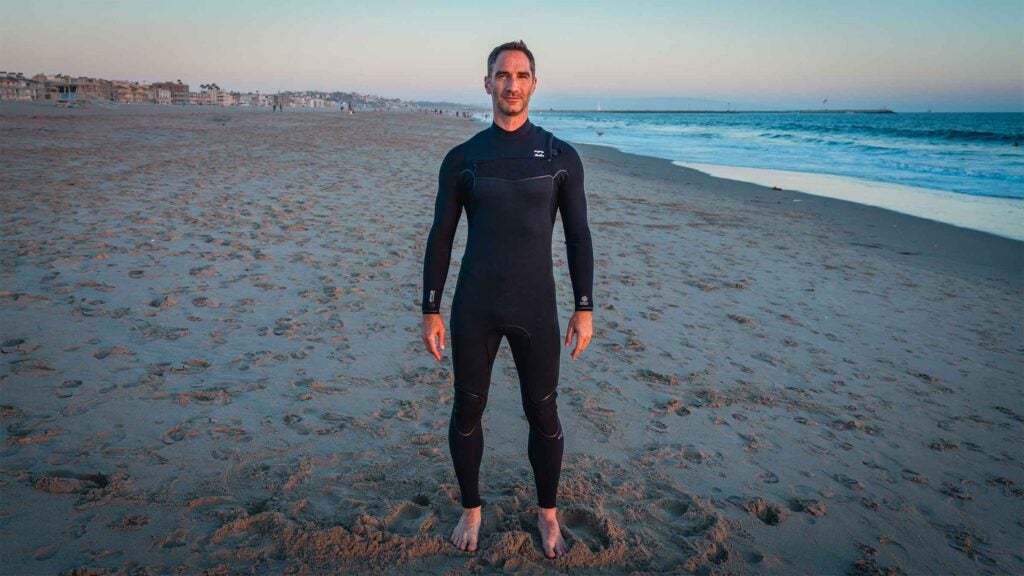No products in the cart.
Outdoor Adventure
Billabong’s New Wetsuit Is the Best on the Market (Released 2024)
In July, when I reviewed the new version of Patagonia’s R1 wetsuits, I talked about how there is often a compromise between a product’s eco-friendliness and its performance, but Patagonia’s suit finally managed to score high marks in both. A month later, Billabong said, “Hold my beer.” The company’s new Furnace Natural Upcycler wetsuit performs even better on both fronts. Not only is it the most sustainable wetsuit currently available, but it’s also the most comfortable one I’ve ever worn. Plus, it cost less, too.
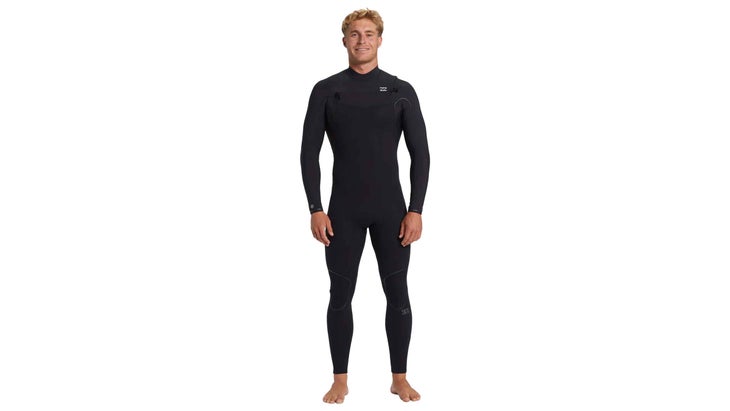
Billabong Men’s 3/2mm Furnace Natural Upcycler Chest Zip Wetsuit
Sizing: S-XXL (men’s), XS-XXL (women’s)
Materials: 85% Natural Rubber and 15% synthetic ingredients, including Bolder Black, Oyster shell powder and Soybean oil
Models: 2/2, 3/2, 4/3, 5/4, and 6/5 millimeter thicknesses, some with optional hoods, some sleeveless
Pros and Cons
⊕ Excellent flexibility
⊕ Comfortable
⊕ Easy entry/exit
⊕ Extremely eco-friendly
⊕ Materials dry quickly
⊗ Lack of silicone inside wrist and ankle cuffs allows some water to get in
⊗ Not quite as warm as the slightly thicker Patagonia R1
If you buy through our links, we may earn an affiliate commission. This supports our mission to get more people active and outside. Learn more.
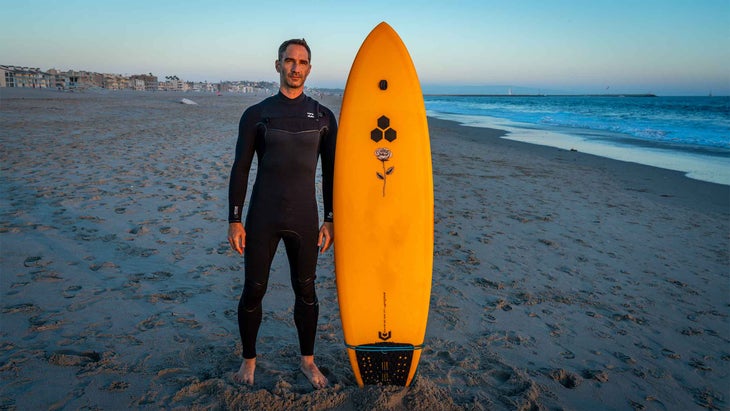
Unparalleled Sustainability
The most notable change that Billabong makes from traditional wetsuit construction is switching from neoprene to natural rubber for the foam material that makes up the bulk of the wetsuit. Unlike traditional neoprene, which uses rubber derived from fossil fuels or limestone, this rubber comes from sustainable, FSC-certified, organic hevea rubber trees in Guatemala, grown in a plantation that has existed since the 1940s. The rubber it produces is of exceptionally high quality, and it meets PAHs, RoHS, and REACH compliance for environmental standards.
The rubber foam (think “neoprene,” but a natural version) contains 85 percent natural rubber, with the other 15 percent stabilizers typically called carbon black. While most companies still use petroleum-based carbon-black stabilizers, Billabong has partnered with Colorado-based Bolder Industries to incorporate its flagship product Bolder Black. Bolder Black is a very high-quality carbon black, but it’s made entirely of post-consumer recycled wetsuits (supplied by Billabong) and other used rubber products like tires. These stabilizers give the rubber its strength, increase elasticity, add pigment for UV resistance, and allow it to be blown into the stretchy foam that we know and love.
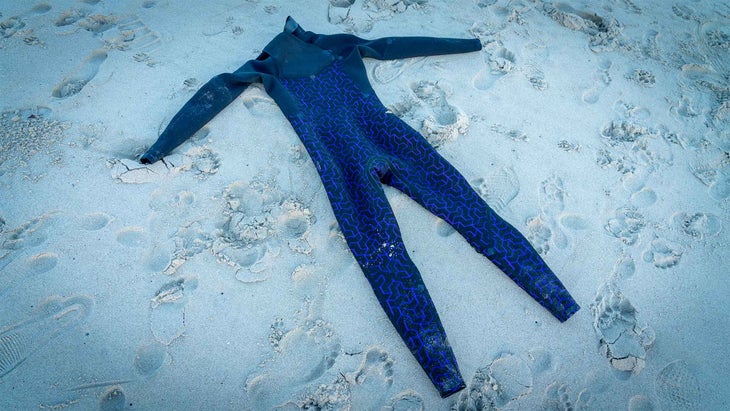
To make the other major components of wetsuits, the jerseys, and liners that cover the outside, Billabong has now switched to 100 percent post-consumer recycled textiles, keeping a lot of unwanted clothes out of landfills. Graphene panels, which are made of a combination of recycled textiles infused with Graphene, are added to keep you warmer, and Billabong claims that all of this feel-good eco-friendly stuff doesn’t sacrifice performance. Much to my surprise, I agree.
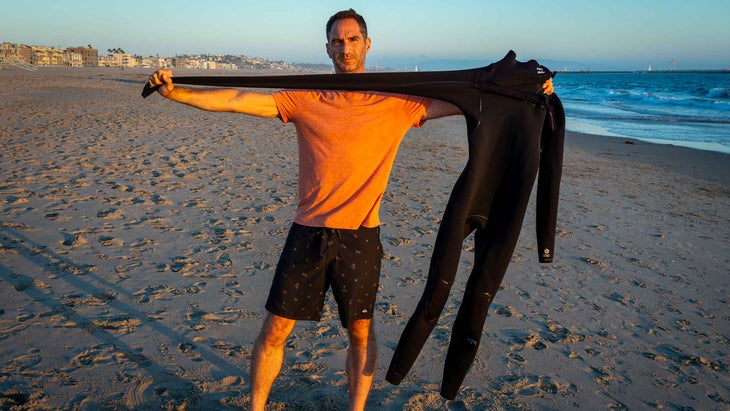
How It Tested
I spent the last couple of months testing the 3/2-millimeter Furnace Natural Upcycler ($380), and can attest that the suit is sublimely comfortable. Thanks to the incredibly soft and flexible rubber, it’s easier to get on and off than any other suit I’ve worn. It’s so stretchy that I feel effectively no resistance when paddling, and I move about as freely as I do in boardshorts. The kneepads (made from natural rubber laminated with an abrasion-resistant recycled nylon jersey called Supratex) are resilient, providing ample protection when duck diving, and the inner seams haven’t chafed me at all. The liner has a nice cozy loft to it also. The zipper is high-quality: I haven’t had any issues with snagging like I did in the Patagonia wetsuit.
I’ve experienced no paddle fatigue in the suit, even during long sessions. It dries at least as quickly as any of my other suits, and it’s held up well, surviving the odd encounter with a rock or a fin without showing a scratch.
How It Compares to the Patagonia R1
The Furnace Natural is noticeably more comfortable than the fall 2023 Patagonia R1 Regulator (the next version of the R1 will likely be out in 2025). It feels lighter, it has more stretch, and it doesn’t have any zipper issues. It isn’t quite as warm as the R1, but that makes sense, considering the R1 is a 3/2.5-millimeter suit, not a 3/2-millimeter (Patagonia is one of the rare manufacturers that uses half-millimeter sizes).
The Furnace is also significantly cheaper, coming in at $380 versus $479 for the R1. You can even get a 3/2 Absolute Natural Upcycler (Billabong’s mid-range version) for as little as $269. This cheaper version has all the same eco updates, though it loses some of the higher-end bells and whistles (like the Airlite 4D jersey, the graphene lining, and the improved seam sealing). Patagonia doesn’t have a cheaper version, unfortunately.
While the Patagonia suit is very sustainable, Billabong has edged it out here by being the first company to produce a fully-functioning wetsuit available to the public with Bolder Black stabilizers, making the Natural Upcycler wetsuits derived by a vast majority from natural rubber or post-consumer recycled products. Patagonia won’t disclose where the stabilizers in its current suits come from, which, like in the Billabong, make up 15 percent of the foam rubber. Patagonia has announced, however, that it will also be using Bolder Black in its next iteration of wetsuits.
Downsides
The only ding on the Furnace Natural Upcycler is that I wish it had a silicone seal on the inside of the wrist and ankle cuffs. Because the rubber is so soft and malleable, I’ve had the sleeves or legs roll up on me a bit when wiping out (and once when paddling hard to get over a large approaching set). It’s a minor gripe, but it would be nice if that could be prevented.
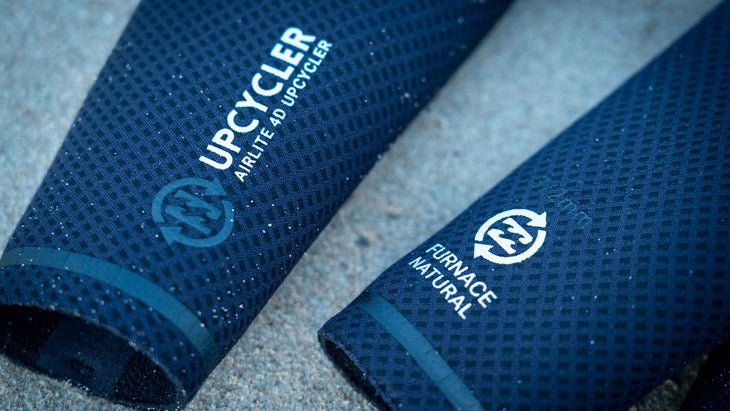
Final Thoughts
The 3/2 Furnace Natural is fantastic for Southern California in the late spring, summer, and fall, but having spent time in it, I might opt for a 4/3 instead. This suit breathes well, and I’d like to be able to wear it during the colder months. Also, I prefer to be a little too warm than a little too cold. That said, I know plenty of people that feel the opposite.
At the end of the day, this is my new favorite wetsuit. All of the eco-forward features give me peace of mind, and I like that I’m not covering my entire epidermis in potentially cancer-causing materials. Apart from that, I wouldn’t know that it was an eco-forward suit if you didn’t tell me: this is a full-on performance wetsuit without sacrifice.
The Billabong Furnace Natural Upcycler suits are now available in Men’s and Women’s and in a variety of thicknesses and styles.
Source link

